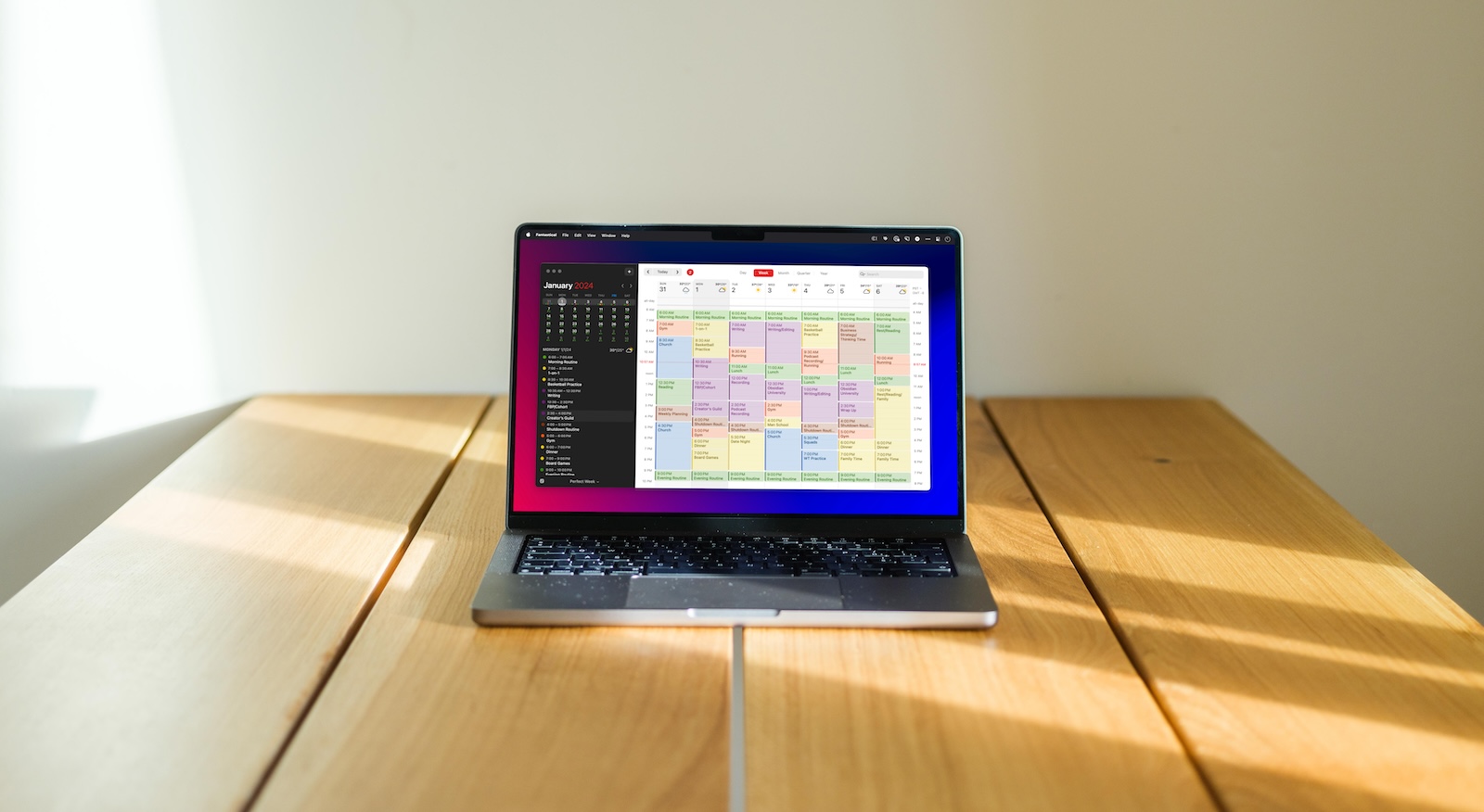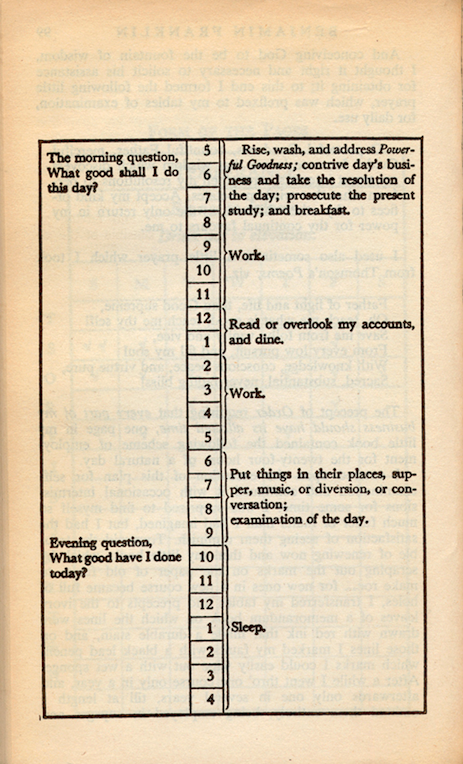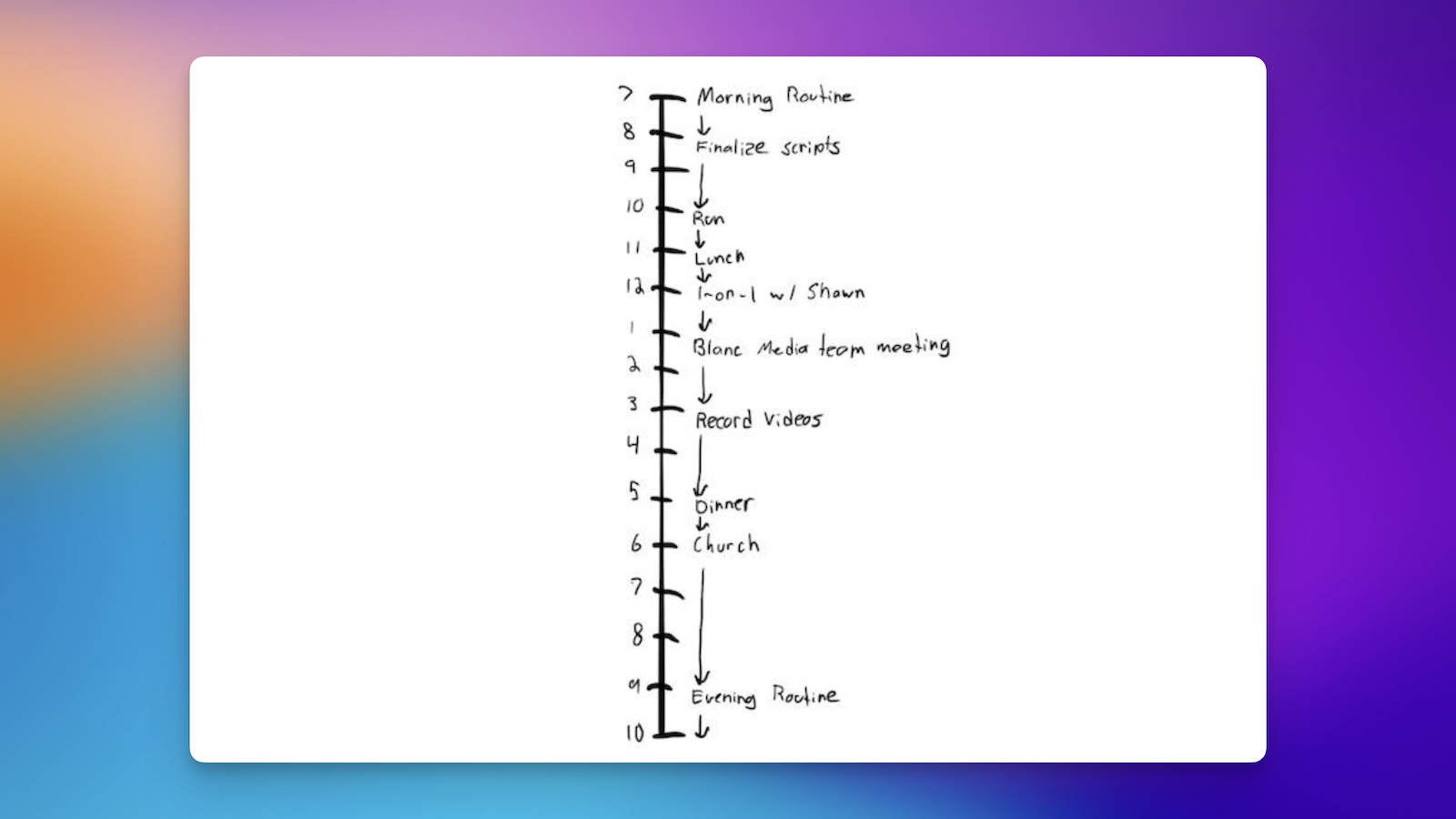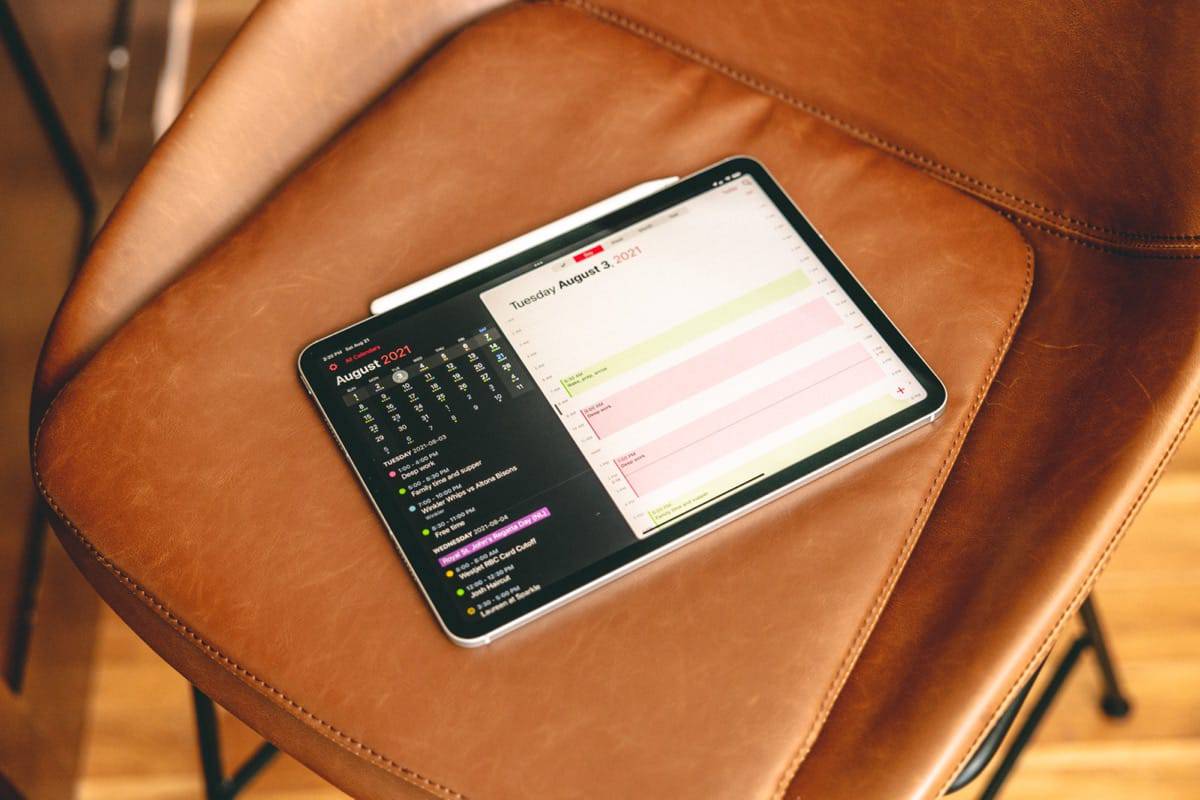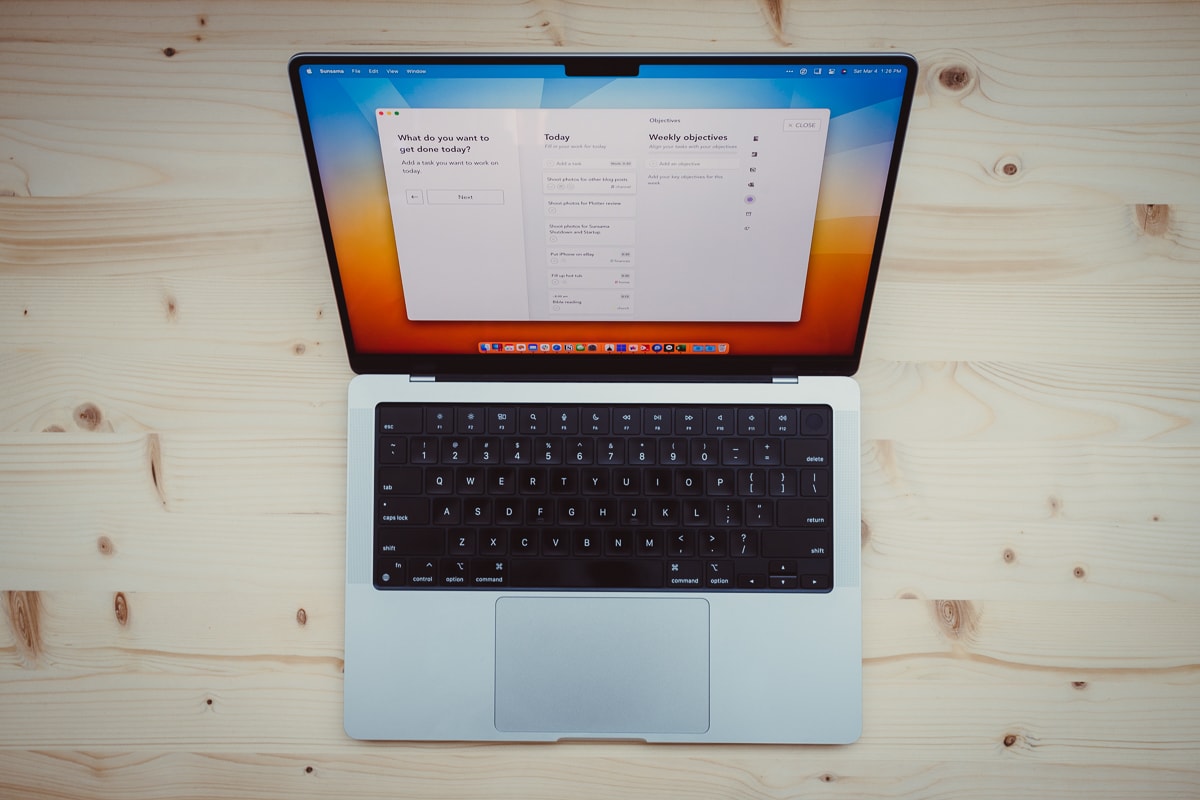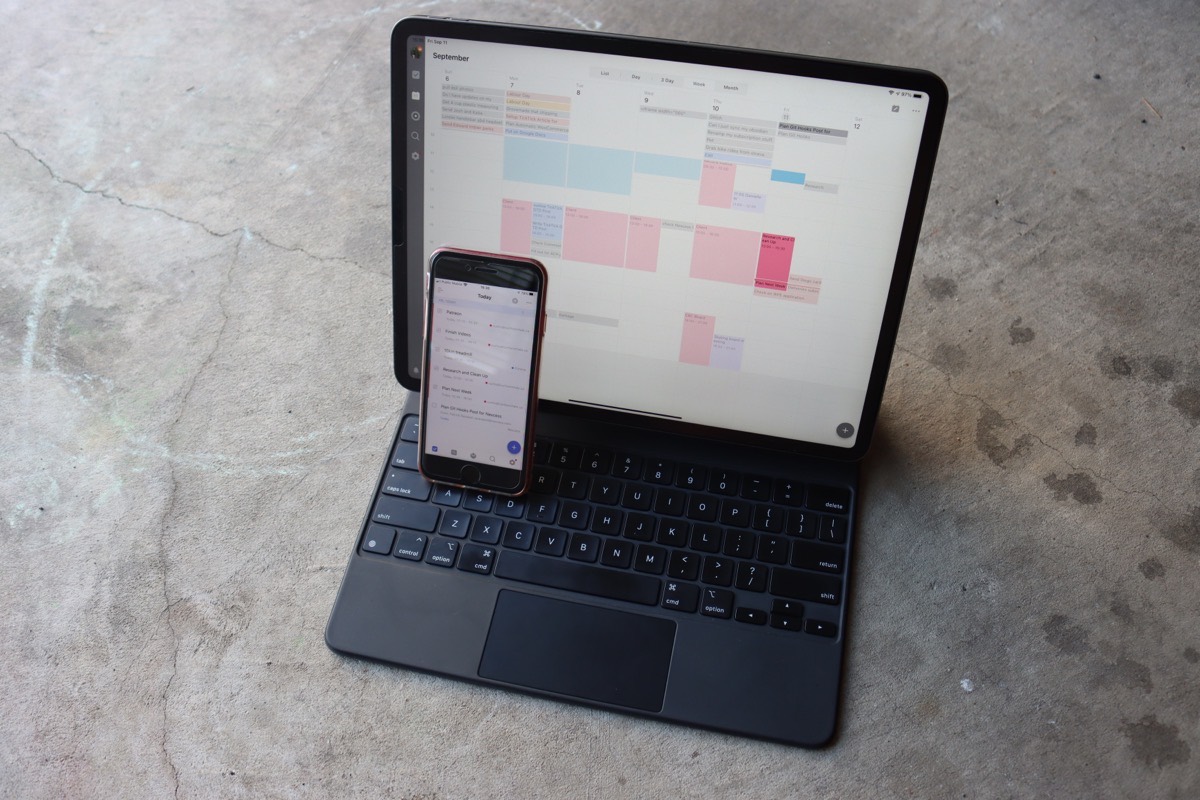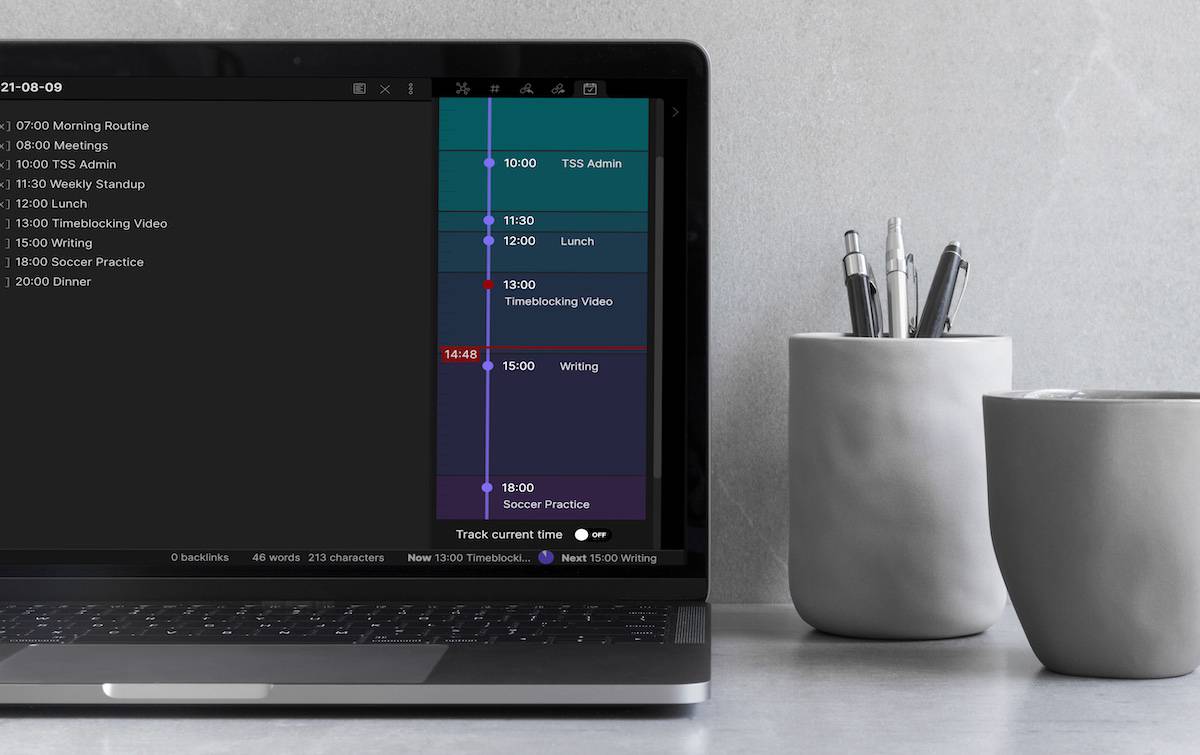The Ultimate Guide to Time Blocking
Ever feel like you don’t have enough time to get everything done?
That’s a trick question (sorry). We all feel that way from time to time, but the real problem isn’t that we have too much to do — it’s in our approach to the time we have available.
Time blocking is a simple practice that you can use to regain control of your day and make sure that you are spending your time effectively on the things that are important to you. Using time-blocking, you can get to the end of the day and feel a sense of accomplishment instead of despair from only getting through 5 of the 25 things on your task list. By learning to choose the right task at the best time, you will actually feel like you have extra time to work with.
But it takes some practice and the right mindset.
In this post, we’ll show you everything you need to know to start time-blocking yourself and feel like you just got more hours in your day.
Design Your Ideal Weekly Schedule
Free → Video Workshop + Productivity Templates
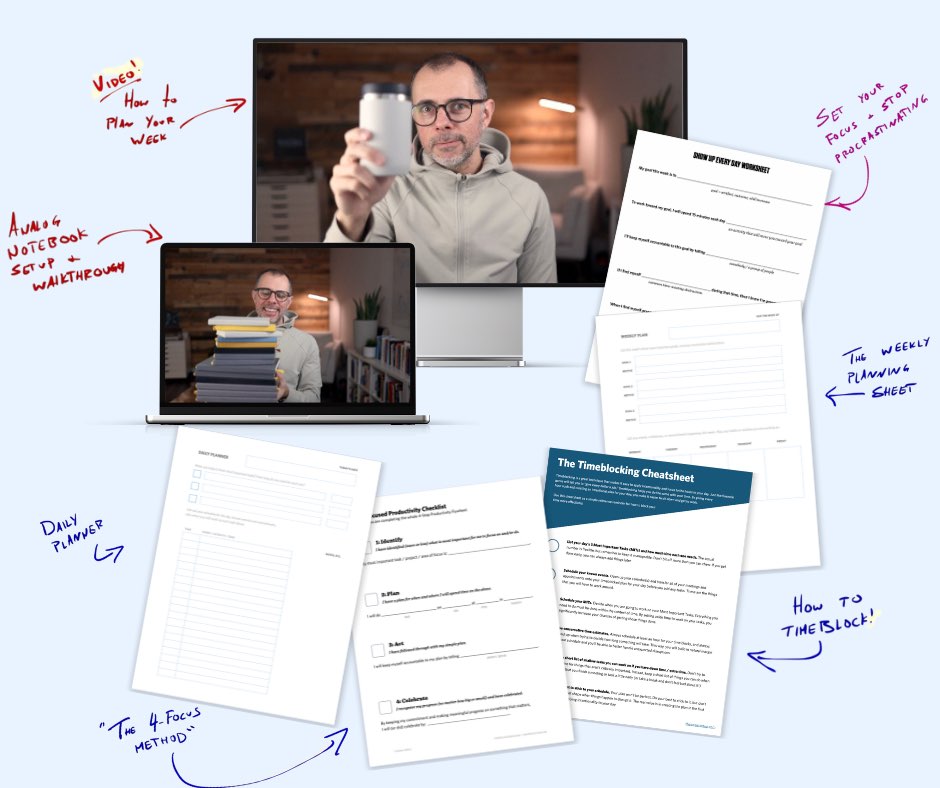
If you want to reduce the busywork and distractions, then sign up here for instant access to a brief video workshop on How to Plan Your Week.
♥️ Quick Note: You’ll get access to the workshop, plus a few additional bonuses to help you overcome procrastination and deal with distractions so you can spend more time on the important work that matters.
What Is Time Blocking?
Time blocking is a simple time management technique where you plan out your entire day ahead of time. You simply decide what you are going to do when and schedule your entire day from when you get up to when you go to bed.
Some of the more famous practitioners of time blocking are people like Bill Gates and Elon Musk, but it’s been around for a really long time. In fact, Benjamin Franklin was time-blocking hundreds of years ago:
The reason: time blocking helps you go through your day with intention and purpose.
By deciding ahead of time the best way to spend each hour of your day, your brain is free to engage with the task at hand. This allows you to focus on what you’re doing instead of wondering if this is really the thing you should be doing right now, which makes you more productive.
There are other names for time-blocking (for example, David Sparks calls it hyper-scheduling, but the approach is the same: deliberate scheduling of your important tasks makes it easier to go through your day with focus and intention.
Why You Should Block Your Time
Simply put, because time is too precious to waste.
Time is the one resource you can never get more of. You can make more money, but you can’t make more time. Once it’s gone, it’s gone.
Which makes it our most precious resource — one that we can’t afford to squander.
But appreciating the value of time and getting the most out of it are two entirely different things. When you value your time but feel like you don’t have any control over how it gets spent, it creates frustration and anxiety.
Time blocking is a way to fight back against this feeling by deciding your intentions ahead of time. The focus benefits allow you to be more productive, creating the feeling that you actually have more time to work with.
Cal Newport (author of Deep Work and a big advocate of time-blocking), said:
A 40 hour time-blocked work week, I estimate, produces the same amount of output as a 60+ hour work week pursued without structure.
That structure that frees your mind to focus is simply a time-blocked plan for your important work, where you decide what the best use of each hour in your day is ahead of time.
The bottom line is that if you really want to do your best work and get better results, you need to be time-blocking because it makes it feel like you have more time. You don’t actually have more time, but it feels like you do because you are able to focus on what you’re doing and get things done faster (and better) than you normally would otherwise.
Give Every Hour a Job
In budgeting, there’s a practice where you give every dollar a job. The reason to do this is that if you don’t, you can easily justify an expense in the moment even if it isn’t in alignment with your overall values or savings goals.
We humans are fickle creatures who have trouble resisting the shiny new object — unless we’ve decided ahead of time what the best use of our limited resources is.
Many people who first come to budgeting and adopt this approach say that they feel like they got a raise at the end of the month simply because they were able to be more intentional with how they spent the money they had.
The practice of time-blocking is essentially the same strategy applied to your time. By giving every hour a job ahead of time (assigning it a specific task), you are much less likely to waste it when you get there because you’ve already decided what is the best thing to be doing right now.
Beat Parkinson’s Law
There’s a productivity principle called Parkinson’s Law that states “work will expand to fill the time allotted to it.”
You’ve probably experienced this yourself. Maybe you were only going to work on a report for an hour but spent all day on it, or you were going to spend 30 minutes in email but you look up and three hours have passed.
By creating time slots for particular tasks, you can establish parameters for the task that help you fight back against Parkinson’s Law. It’s a great way to “box in” shallow work and administrative tasks that you need to get done but aren’t really that important, which is why another name for this time management method can also be “time boxing.”
How to Plan Your Day Using Time Blocking
The beautiful thing about time blocking is that the process is simple and doesn’t take a lot of time.
The first step is to create a vertical timeline of your entire day. This can be done in a digital calendar app like Fantastical, or you could simply draw a line down the left side of your page and label each hour of your day. Make sure you leave enough room to add things to your timeline in half-hour increments, and that your timeline goes all the way from when you wake up to when you go to bed.
Once you have your timeline, the next step is to add your meetings and appointments. These are the specific tasks that you have to do or places you have to be at a certain time. When adding these appointments or meetings to your timeline, make sure to build in some margin for things like travel time or processing your notes after a meeting. This allows you to disengage when the time block is over and focus on the next one.
Next, block off time for the important tasks that you want to get done. Everything that you need to do must be done within the context of time. By deciding which block of time you are going to do something, you significantly increase the likelihood that you follow through and complete the task. Just be careful not to select too many things when you are making your time-blocked plan for the day. If you’re just starting with time blocking, you’ll want to limit your important tasks to only three things. Don’t try to bite off more than you can chew. You need to create a realistic plan that you can successfully follow so you can build some momentum.
Once you have your essential tasks on your timeline, the next step is to fill out the rest of your timeline until every hour has been filled. You don’t have to have work tasks for every entry on your timeline, but you do need to give every hour a job. Make sure to block time for the fun things you want to do, and set aside time for things like exercise and routines.
When you’re finished, it should look something like this:
Once you’ve completed your time-blocked plan, you just do your best to stick to it as you go about your day. You likely won’t be able to follow it perfectly, but that’s okay. By deciding ahead of time what your day should look like, your brain is free to focus on the task at hand. So even if your day gets completely blown up, the five to ten minutes you spent planning allow you to approach your entire with intentionality. And if you want to see it in action, we’ve got a video from our time-blocking course available here.
Choosing the Right Time Blocking Tools
You can time block using either analog or digital tools. I like to time block in a fancy notebook with a fountain pen as I wrote about here. I’ve also experimented with using an Android e-ink tablet. Josh has done time-blocking using a Traveller’s notebook. You could also time block on the iPad in an app like GoodNotes, and if you want something a little more structured, you could use something like our 2024 Digital Planner.
And while we love our digital tools, there is a case to be made for analog time blocking. Task managers are great for showing us all the things that we could do, but by forcing yourself to select a small number of tasks and creating a separate analog list, you create a sense of ownership and control over your schedule.
The bottom line is that when it comes to time blocking, the best tool is the one that provides the least amount of friction so you do it consistently.
Some Recommended Apps for Time Blocking
If you do decide to use a digital tool to create your time-blocked plan, here are a couple of recommendations.
Fantastical
Fantastical is a great tool for time blocking. You basically just need to create a separate calendar (or calendar set) and then use calendar events to block your time. The advantage of using a calendar app like Fantastical is that you can use the built-in reminders to give you alerts about switching time blocks without having to look at your calendar. You can also drag tasks into your calendar directly, like Josh wrote about here.
If you don’t want to subscribe to Fantastical, you could also time-block in a simple Google Calendar. The approach would basically be the same, minus some fancy features like Calendar Sets.
Sunsama
Sunsama is a planning app that is built with time blocking in mind. It gives you a unified daily view with everything you need to get done, and offers tools to help you create realistic daily plans from your tasks in other online apps like Asana, Notion, Trello, and more. It’s kind of nice that you can pull in tasks from multiple sources (for those who track tasks for different projects in different places), but it’s fairly expensive. Josh has a great article comparing the features of Sunsama with Fantastical here.
TickTick
TickTick is a task manager that does a whole lot more, like allow you to add your tasks directly to your calendar. It’s never really stuck for me, but it is a great fit for time blocking. Curtis McHale even created a video about how to time block in TickTick a while back here.
Obsidian
Obsidian may technically be a notes app, but the Daily Notes feature makes it a great place to create a plain text time-blocked schedule. You can do this by hand, or you can use a community plugin to add additional functionality to Obsidian to make time blocking even easier. This is probably the nerdiest option available, but if you want to see how to do this, I actually wrote about it (and made a video) here.
A Few Time Blocking Tips
While the basics of time blocking are pretty straightforward, here are some additional tips if you want to up your time management game.
Keep it Simple
I said this earlier, but it’s worth saying again: don’t create an unrealistic plan that you can’t keep up with.
Starting with the number of tasks on your to-do list is a terrible way to plan your day. If you work this way, you’ll always have more to do than you have available time. You have to work within your natural limits (not just time, but also energy). If you have time to do something but no energy to do it, the task won’t get done.
That’s why you have to be careful not to pack your time-blocked plan too full.
A better approach is to create a realistic plan that you can successfully complete and do for a while. Even if you feel like you have extra bandwidth to do more work, don’t! For example, most people can only do about 4 hours of creative work in a day. So if you try to write for 8 hours straight, it probably won’t end well. You need to figure out for yourself where your limits are, then respect them.
Build some momentum where you follow through on the plans you create, and you’ll gain a better understanding of your natural work rhythms and avoid burning out.
Use Big Time Blocks
The bigger your time blocks are, the more margin gets built in to your schedule. This is why you should never block time for anything less than 60 minutes.
By using larger chunks of time, you build flexibility into your daily schedule that you’ll need when things don’t go quite right. If you have a buffer, you’ll more likely be able to recover without your entire time-blocked plan breaking down.
That doesn’t mean that everything has to be in exactly one hour blocks. It just means that you should time block for anything less than 60 minutes. If you have a meeting that is scheduled for an hour but often goes lightly over, budget 90 minutes for the meeting and use the buffer to tie up the loose ends afterward.
Roll With the Punches
As heavyweight boxer Mike Tyson once said, everyone has a plan until they get punched in the mouth.
But the truth is that things rarely go exactly according to plan. When your plan gets messed up, it’s easy to get upset and push to get back on track. But that’s the wrong approach.
One of my favorite quotes comes from former president Dwight Eisenhower, who said:
Plans are worthless, but planning is everything.
In other words, don’t worry too much about trying to stick to the time-blocked plan you created. So when your kid gets sick or your boss drops an unexpected project on your lap, don’t get mad. If things get thrown off, feel free to adjust your schedule accordingly. The real win is simply taking the time to create the plan in the first place.
Batch Your Tasks
Earlier, I mentioned that you shouldn’t try to cram more than three important tasks a day into your time-blocked plan. But that doesn’t mean that you don’t do those smaller tasks that need to get done.
The way to tackle these smaller tasks is to do them together using task batching.
By task batching, you eliminate the switching cost of doing those tasks in the middle of something else by creating a group of similar tasks that you do for a specific amount of time. For example, if you are doing creative work and you hear the ding from your email app, the temptation is to go check it and deal with it right away. But there’s a cost to stopping what you’re doing and switching contexts to go deal with the email. And if you really want to be productive, you should try to minimize the impact that task switching has in your daily work by creating specific blocks of time where you can deal with these types of tasks.
For example, you may put a Communications block on your time-blocked plan for when you check email and respond to Slack messages. By doing a bunch of these tasks at once, you’re able to be more efficient because you’re already in that mindset and the constraints provide you a logical place to disconnect from the task. This way, you don’t have that pull to check your messages or your inbox all day as you try to focus on deep work instead.
(Phone calls and social media are also great candidates for task batching.)
Don’t Forget the Fun Stuff
One of the mistakes people make when time-blocking is just to schedule their work tasks. But the result is a schedule that is packed full of things you maybe don’t really want to do.
But when you have things on your daily schedule that you are looking forward to, it makes it easier to get through your work blocks when you have something fun to look forward to.
Personal time and free time should also appear here. For example, I put thinking time on my time-blocked plan a couple of times per week and always make sure to block out time for running or going to the gym.
Keep Score
I mentioned earlier that the main benefit of time blocking is the intentionality it provides as you go about your day. But over time, you may decide you want feedback you can use to make better plans in the future.
This is where time tracking comes in.
Time tracking is a bookend to time blocking. If time blocking is the budget for how you want to spend your time, time tracking is the record of how you actually did. It’s the scoreboard you can use to evaluate your performance so you can make more accurate plans for the future. For example, if you notice your daily schedule usually breaks down right after lunch when you have time blocked for deep creative work, you might want to pick a different time slot for that type of work when your energy levels are a bit higher. But you won’t really know that unless you’re paying attention.
Many people resist the idea of time tracking because it feels like a lot of work. But you don’t have to manually track your time. We wrote an article where we compared several different time trackers and picked the best depending on how automatic or manual you want your time-tracking process to be here. And if you prefer something manual, there’s an interesting analog object called Timeular which can automatically start and stop timers based on which way you position a physical object on your desk.
The bottom line is there are lots of options to reduce the friction with time tracking. And you don’t need the data to be perfect — you just need a general sense of whether how you think you spent your time matches up with how you actually spent your time.
Learn to Say No
As you get better at time-blocking, you will feel like you have more capacity. But be careful about filling it too quickly.
One of the mistakes people make as they get better at managing their time is they just fill the excess. This causes margin to disappear and if not monitored carefully can compound to the feeling of running down a hill at full speed. In that state, even a minor disruption is enough to cause you to fall on your face.
Charles Boyle once said:
If not controlled, work will flow to the competent man until he submerges.
Don’t let this happen to you! Fight for margin. If you start to create some breathing room in your schedule, celebrate it and protect it. Don’t fill it up right away just because someone asked you to do something or you have more things in your task manager.
There will always be more work to do. Remember, you’re playing the long game.
Conclusion
If you could only implement one time management strategy to be more productive, it should be time blocking. It’s easy to do, doesn’t take much time, and provides a huge return on your time investment when you actually sit down to do the work. It’s the best way to make sure that you are making consistent progress on the right things, and can be adapted to fit just about any productivity or creativity workflow.
And if you want even more help with time blocking, we’ve got a course just for you.
Design Your Ideal Weekly Schedule
Free → Video Workshop + Productivity Templates

If you want to reduce the busywork and distractions, then sign up here for instant access to a brief video workshop on How to Plan Your Week.
♥️ Quick Note: You’ll get access to the workshop, plus a few additional bonuses to help you overcome procrastination and deal with distractions so you can spend more time on the important work that matters.

